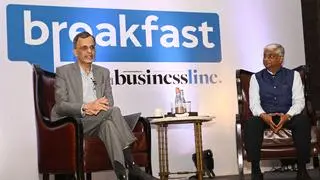With the surge in inflation, GST rate rationalisation may not happen any time soon, a top government official said here on Wednesday. The official also asserted that the slew of inflation control measures announced in the last few days will not alter the government’s borrowing calendar and the Centre will stick to its planned borrowings as of now.
While highlighting the plethora of measures including lowering of Road & Infrastructure Cess, import of edible oil at nil duty and limiting the export of sugar, besides other moves to rein in inflation, the Centre is also at pains to point out that the utilisation of cess collected by it under Excise Duty on petrol and diesel is much higher than collection.
GST: Key issues
After the GST Council meeting in Lucknow last September, a Group of Ministers (GoM) led by Chief Minister of Karnataka, Basavaraj S Bommai , was set up to look at rate rationalisation. The GoM is yet to finalise its report.
“There have been genuine problems in rate rationalisation. But even if the GoM submits its report now and it is presented before the Council, will the Council take a call? Difficult to say, as the ecosystem is strenuous,” the official said. Earlier, steps to rationalise tax rates could not be taken due to the Covid-19 pandemic although the inverted duty structure (i.e., higher duty on inputs and lower duty on output) was corrected on items such as footwear.
There are two key issues as far as rate rationalistaion is concerned. First, the weighted average Revenue Neutral rate (RNR) has come down to around 11.5 per cent from the initial rate of 15-15.5 per cent, which necessitates rate rejig. Now, the intention is to see how to achieve at least the RNR rate at which the GST was brought in.
The second issue is too many rates. As on date, there are four main rates under the GST: 5, 12, 18 and 28 per cent. Then there are special rates of 0, 0.25, 1 and 3 per cent.
Besides, there is also a provision of cess at the rate of 1 to 25 per cent. For services, there are four rates — 5, 12, 18 and 28 per cent, beside a special rate of 0 per cent. There have been demands for restructuring the slabs by merging either 12 and 18 or 5 and 12, and also for a special rate on textile in case the inverted duty structure is done away with.
Use of Cess
Further, the official said that post introduction of GST, 18 types of cess have been subsumed into the new tax regime, while only four including road and infrastructure cess remained. Cess is not part of devolution pool.

“Cesses which remain are funding important schemes and development activities. Centre has provided more than the actual collection to various schemes which are funded from cesses,” the official said while adding that addition is being provided from Consolidated Fund of India (CFI) and money is spent in States only.

Global inflation outlook
On Saturday, Centre cut the Central excise duty by ₹8 a litre and ₹6 a litre on petrol and diesel respectively. This will result in revenue foregone of ₹1 lakh crore for the Centre.
Borrowing
Though various measures initiated to rein in inflation is estimated to have more than ₹2.5 lakh crore of additional expenditure, the Centre indicated no additional borrowing. “At this moment, we do not think, we need additional borrowing. We ill stick to calendar,” the official said.








Comments
Comments have to be in English, and in full sentences. They cannot be abusive or personal. Please abide by our community guidelines for posting your comments.
We have migrated to a new commenting platform. If you are already a registered user of TheHindu Businessline and logged in, you may continue to engage with our articles. If you do not have an account please register and login to post comments. Users can access their older comments by logging into their accounts on Vuukle.